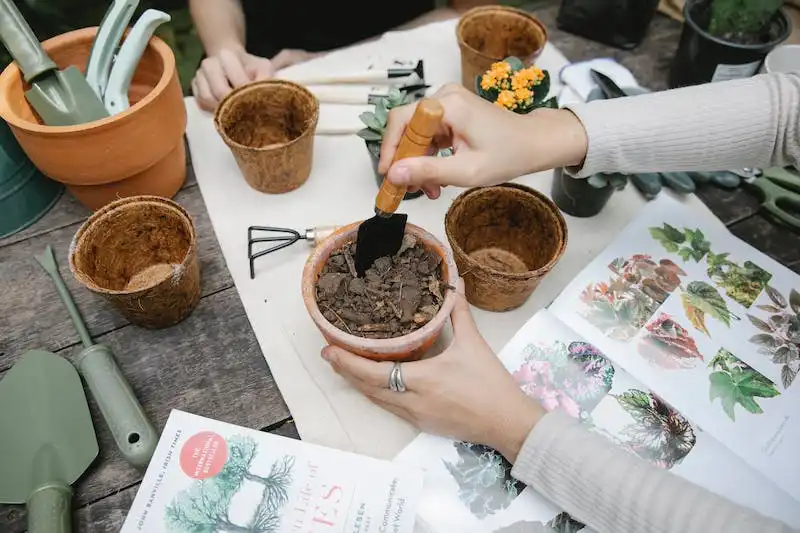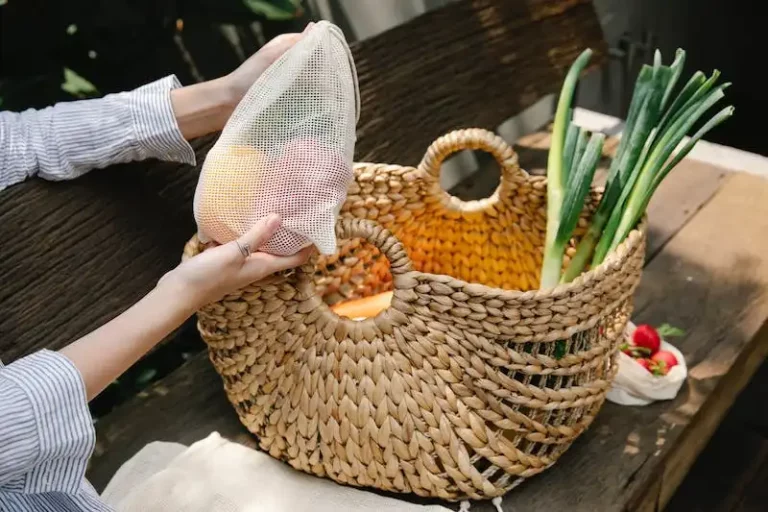Welcome to the ultimate guide on orchids! Orchids are something truly exceptional. With their vibrant colors, unique patterns, and delicate blooms, they are widely regarded as some of the most spectacular flowering plants in the world. Orchids come in a variety of types and colors, from the common pink and white varieties to the more rare and exotic species with spots and patterns.
Orchids are fascinating plants that require special care and attention. They are not like your typical houseplants, and knowing how to keep them thriving can be a challenge. But with the right conditions and a little confidence, anyone can grow and enjoy these beautiful flowers.
Before you embark on your orchid-growing journey, it’s important to learn some key facts about these plants. Orchids have long been cultivated and admired for their beauty. In fact, they have been grown for thousands of years in different parts of the world, from ancient China to the Central and South America. Today, they are still a favorite among flower enthusiasts and can be found in homes and gardens all around the world.
Orchids can be a bit picky when it comes to their growing conditions. They thrive in bright, indirect light and need a well-drained potting material. They prefer warm, humid environments and are sensitive to changes in temperature and humidity. Orchids have a reputation for being fussy, but with a little knowledge and experience, they can be grown with great success.
One of the most common questions about orchids is how to water them. Orchids should be watered regularly but not excessively. Overwatering can cause root damage and lead to the dreaded “orchid blast,” where the leaves turn mushy and eventually die. On the other hand, underwatering can cause the leaves to droop and the flowers to wilt. Finding the right balance is key.
When it comes to fertilizing orchids, less is often more. It’s best to use a specialized orchid fertilizer and follow the instructions on the package. Overfertilizing can cause damage to the roots and leaves, so it’s important to err on the side of caution. Testing the soil regularly and adjusting the fertilizing schedule accordingly can help keep your orchids healthy.
Choosing the right orchid variety can be overwhelming, especially for those new to orchid cultivation. There are thousands of orchid species and hybrids to choose from, each with its own unique characteristics and requirements. Some of the most popular orchid genera include Phalaenopsis, Cattleya, and Dendrobium. It’s important to research each type and choose the one that best suits your environment and level of experience.
So why should you give orchids a try? Aside from their breathtaking beauty, orchids have a long lifespan, with some varieties living for several years. They can provide a stunning focal point in any room and are known for their long-lasting blooms. With proper care and attention, your orchids can flower multiple times throughout the year.
As you dive into the world of orchids, remember to consult reputable sources, such as the Royal Horticultural Society or the American Orchid Society, for guidance. Their manuals and FAQs can provide valuable information on everything from potting and repotting to troubleshooting common orchid problems.
In this article, we will explore the fascinating world of orchids in more detail. We will discuss the different types of orchids, their growth requirements, and tips for keeping them healthy and blooming. Whether you are an experienced orchid grower or a beginner, this guide will help you navigate the frontiers of orchid cultivation with confidence.
So, let’s begin our journey into the world of orchids and discover the joys of growing these magnificent plants!
The Best Orchid Care to Keep These Beautiful Plants Thriving
Orchids are some of the most beautiful and exotic plants you can grow. With their vibrant colors and delicate flowers, orchids bring elegance and charm to any space. However, orchids can be a bit tricky to care for, requiring specific conditions and attention. Here are some essential tips to help you keep your orchids thriving:
1. Repotting: Orchids should be repotted every one to two years. This is because their roots need room to grow and the potting material can break down over time. Repotting provides fresh material and space for the orchid to thrive.
2. Watering: Orchids have specific watering needs. They should be watered thoroughly, allowing the water to drain out completely. The frequency of watering depends on the specific orchid variety, so it’s important to know the needs of your particular orchid.
3. Light: Orchids need bright, indirect light to thrive. Placing them near a window where they can receive filtered sunlight is ideal. Avoid direct sunlight, as it can burn the leaves.
4. Fertilizing: Orchids require regular fertilization to provide them with essential nutrients. Use a balanced orchid fertilizer and follow the instructions on the label. Fertilize during the active growing season, usually spring and summer.
5. Temperature and Humidity: Orchids are tropical plants, so they thrive in warm and humid environments. The ideal temperature range for most orchids is between 60-75°F (15-24°C). In winter, some orchids may tolerate cooler temperatures, but it’s important to check the specific needs of your orchid variety.
6. Potting Material: Orchids need a well-drained potting material. You can use orchid bark, sphagnum moss, or a mix of both. Avoid using regular potting soil, as it retains too much water and can cause root rot.
7. Inspect for Pests: Regularly check your orchids for any signs of insects or pests. If you notice any, take immediate action to treat the infestation and prevent it from spreading to other plants.
8. Choose the Right Orchid: There are thousands of orchid varieties to choose from. Some popular ones include Phalaenopsis (moth orchid), Dendrobium, Cattleya, and Oncidium. Research the specific needs and care requirements of the orchid variety you choose to ensure its success.
By following these care tips and understanding the specific needs of your orchid, you can cultivate a thriving and beautiful orchid plant. With time and patience, your orchid will reward you with stunning flowers year after year.
How to Water Orchids
Watering orchids can be a bit tricky, as they have specific needs. Here are some tips to help you keep your orchids healthy and thriving:
- Know your orchid: Different orchid species have varying watering requirements. Understand the specific needs of your orchid so that you can provide the right water conditions.
- Use well-drained mix: Orchids prefer a loose, well-draining potting mix. This helps prevent overwatering and root rot. Make sure that excess water can easily flow out of the pot.
- Watering frequency: Orchids generally need to be watered about once a week. However, this can vary depending on the type of orchid, the type of potting material, and the environmental conditions.
- Water from below: To water your orchid, place the pot in a shallow tray filled with water. Allow the orchid to soak up water from the bottom for about 15-20 minutes. This ensures thorough watering without drenching the leaves.
- Avoid wet foliage: Orchid leaves are prone to rotting if they remain wet for too long. It’s best to water the orchid in the morning to allow time for the foliage to dry out during the day.
- Check for signs of dryness: Orchids show signs of dryness when they need watering. Look for wrinkled or shriveled pseudobulbs, yellowing leaves, or dry potting material. These are indications that the orchid is thirsty.
- Beware of overwatering: Overwatering can cause root rot and lead to the death of the plant. Allow the potting material to dry out slightly between waterings to prevent this from happening.
- Use room temperature water: Orchids prefer water that is at room temperature. Avoid using cold water, as it can shock the orchid’s system.
- Fertilize properly: Fertilizing is important for orchids to bloom and grow well. Use a balanced orchid fertilizer and follow the manufacturer’s instructions for application. Usually, it’s recommended to fertilize once a month during the growing season.
- Observe your orchid: Keep an eye on your orchid’s overall health and adjust the watering routine as needed. The condition of the leaves and roots can be indicators of the orchid’s water needs.
Remember, each orchid is unique, and it may take some time to find the perfect watering routine for your specific plant. With patience and proper care, you’ll be able to enjoy the gorgeous flowers that orchids are commonly known for!
Test Garden Tip
Water is essential for the proper growth and blooming of orchids. However, it is important not to blast the plants with an excessive amount of water, as overwatering can lead to root rot and eventual death. The amount of water needed depends on the specific orchid species, with some needing less frequent watering and others needing more.
When watering orchids, it is best to follow the “soak and dry” method. This entails thoroughly watering the orchid until water runs out of the bottom of the pot, and then allowing the plant to dry out before watering again. The frequency of watering varies depending on factors such as temperature, humidity, and the type of potting material used.
One way to provide proper humidity for orchids is by placing a tray of water filled with gravel or pebbles below the orchid pots. As the water evaporates, it increases the humidity around the plants. Another helpful tip is to mist the orchid leaves with water regularly, especially during dry months or if you are growing orchids indoors with low humidity.
Fertilizing orchids is also important for their overall growth and flowering. It is recommended to use a specially formulated orchid fertilizer, following the instructions provided by the manufacturer. Orchids have specific nutritional needs, and consistent fertilizing can help them thrive and bloom.
In the orchid industry, there are thousands of orchid species and genera. Some of the most well-known orchids include Phalaenopsis, also known as the “moth orchid,” and Lady’s Slipper orchids. Orchids are appreciated for their unique and beautiful flowers, which can be found in a range of colors from vibrant pinks and purples to delicate whites and yellows.
Orchids are part of the Orchidaceae family, and the name “orchid” comes from the Greek word “orchis,” meaning testicle. The renowned Swedish botanist Carl Linnaeus is credited with naming the orchid family and creating the binomial system of classification for plants.
If you want to experience the beauty of blooming orchids, proper care and attention are essential. Understanding the needs of your orchids and providing the right environment, including proper watering, fertilizer, and humidity levels, can help keep your orchids thriving and prevent problems such as yellowing leaves or lack of blooming.
For more information on orchids and helpful FAQs, check out reputable sources such as the Royal Horticultural Society or the American Orchid Society. These sources have extensive resources and guides for orchid enthusiasts of all experience levels.
Remember, each orchid is unique, and it may take some time and trial-and-error to find the best care routine for your specific orchid. But with patience and proper care, your orchid plants will reward you with stunning flowers and a beautiful addition to your garden or indoor space!




